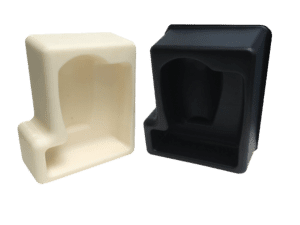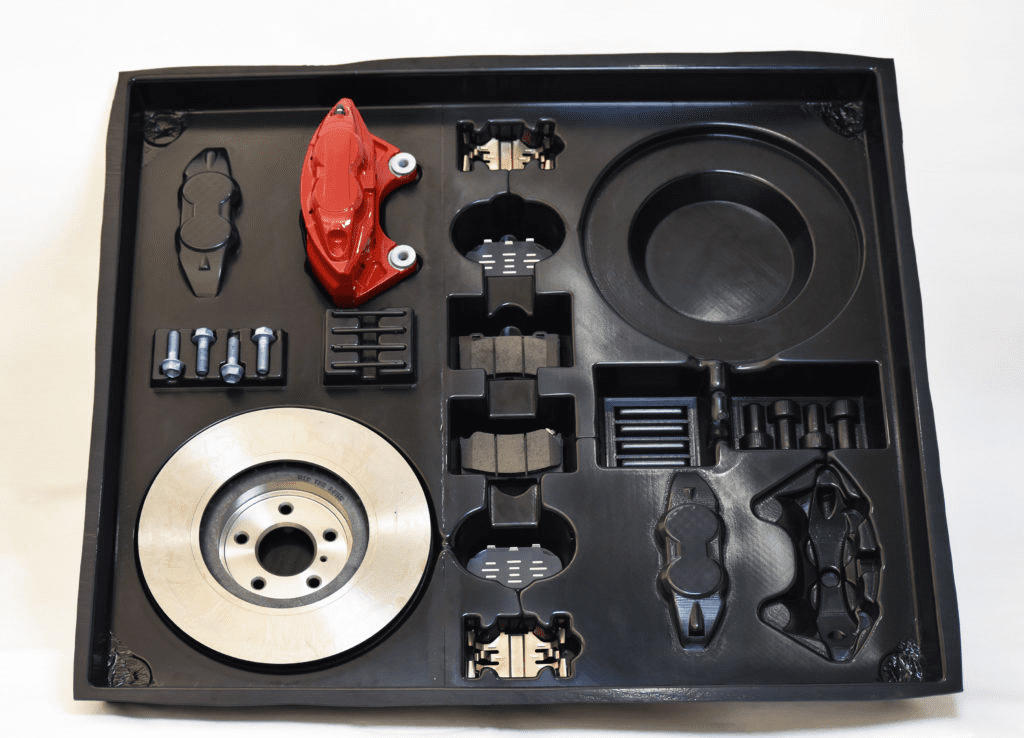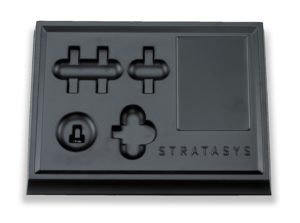Application Brief – FDM 3D Printed Thermoform Tooling
Thermoforming is a manufacturing process for shaping thermoplastic sheets or films over a mold through the application of heat and pressure.
Read More
Using 3D printed technology you can quickly manufacture low-cost thermoforming tools on-demand
Take advantage of the multiple benefits 3D printed thermoform tooling offers.
Thermoforming is a collection of manufacturing methods that heat and form sheets of extruded plastic. Using FDM 3D printing technology, reduce the overall time and cost to produce thermoformed parts using FDM thermoplastic materials. This process offers the convenience of simple tool fabrication compared with traditionally fabricated tooling that was specific to an application.
Need 3D Printed Thermoform Tools?
Work with our 3D printing service bureau to have them manufactured on-demand


Experience reduced lead times as FDM thermoforming allows you to build tools in hours or days instead of weeks or months. Quick design changes in CAD gives you fast customization options as you eliminate secondary machining operations needed to incorporate vacuum features. The inherent porosity of FDM thermoform tooling eliminates the need to machine vacuum holes in the tool. This process also features increased tool complexity as you can build as much or as little in your print as needed such as variable wall thickness and other features to reduce thermal mass and gradients.

Virtually any thermoplastic available as extruded sheet stock may be used to thermoform prototypes or manufactured parts. Wall thicknesses can range from foils to thick-gauge stock with no molding stresses to combat. Traditionally, tooling requires large production operations and are timely and costly to run. With 3D printing, as the suitable alternative, manufacturers can take advantage of short-run manufacturing and prototyping with tool life ranging from 100 to 1,000 parts.
Thermoforming is a manufacturing process for shaping thermoplastic sheets or films over a mold through the application of heat and pressure.
Read MoreHeavy gauge thermoforming is normally used to produce large parts ranging up to 15 feet by 15 feet with depths up to three feet such as automobile doors, instrument panels, refrigerator liners, utility vehicle beds and plastic pallets
Read MoreThis process guide documents the steps for vacuum forming since it is the most common thermoforming method. However, many of the details presented may also be applied to drape and pressure forming.
Read MoreThis technical design guide describes the design, processing, manufacture, and post-processing techniques and procedures for additively manufactured thermoforming tooling using Stratasys FDM® 3D printing technology
Read Moren this step-by-step technical application guide, we take a look at how to perform thermoforming with 3D printing and 3D printed forming tools
Read More